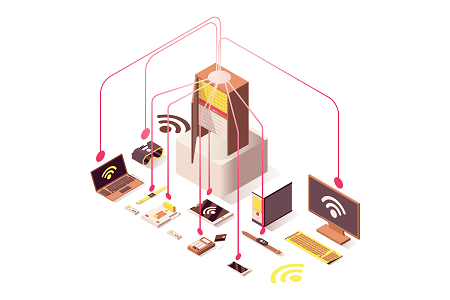Salient IT Services › Data Backup Auburn
What you need to know about data backups in Auburn
It’s not only essential to perform data backups, it’s essential to perform them in a manner which is both robust and legal. With that in mind, here is a quick guide to what you need to know about data backups in Auburn.
Effective data governance also applies to performing data backups
The underlying principle of data protection is that you collect only what you need for a specific purpose and keep it only for as long as it is necessary to fulfill that purpose. A backup is essentially a snapshot of your data at a specific point in time, which you can then use if there are any issues with your production data.
Putting these two facts together, it’s easy to see that if you just keep on taking backup after backup after backup without a solid process regarding what to do with them if they are not used, then you could very easily find yourself holding onto data which you no longer need at all, let alone no longer need actively.
This means that an effective data backup policy needs to have a process for identifying which data is still being actively used and which is dormant and can therefore be either moved into an archive or simply deleted. Not only will this help to keep you on the right side of the law and compliance programs but it can also do a lot to cut down on your data-storage costs.
Start with the end in mind
Remember that you are not just taking data backups for the sake of it. You are taking them so that you can restore from them if need be and you will generally want to do so at the maximum possible speed and with the minimum possible hassle (the one usually implies the other). It may therefore be worth paying for faster storage and more bandwidth to enjoy the great convenience it will offer.
Remember that it takes more than a data backup to make a disaster-recovery solution
You can incorporate your standard data backup process into your disaster-recovery solution. In fact, it can often make a lot of sense to do so, especially if you’re already working in the public cloud. If you go down this route, however, remember that you need more than just data to work, you need the tools to access and use the data, for example an operating system and applications.
Data backups in the public cloud

Even though the mainstream public clouds have proven themselves to be thoroughly robust options, it’s still highly advisable to have a backup of your data in another location and, ideally, to have a proper disaster-recovery solution in place. The obvious, and often best, option is to use another public cloud for both.
Setting this up can be more of a challenge than you might think as the data will need to be encrypted in public cloud A for transportation across the public internet into public cloud B and if public cloud B is also to be your disaster-recovery platform, then it will need to be decrypted there so it is ready for use.
That means that it will then need to be encrypted again if it’s needed for regular recovery as it will need to go back across the public internet to reach public cloud A again. Alternatively, you could keep two copies of the data, one encrypted and one decrypted, but this would significantly increase your data storage costs.
Data backups in the private cloud
You can usually backup from a private cloud to a public cloud, even if your data is sensitive, because you would typically encrypt it on your own servers and keep it encrypted not just on its way through the public internet but also on the public cloud. If it wasn’t needed for restoration, it would be deleted in its encrypted state.
This can be a very cost-effective approach to data backup, the problem is that you cannot use a public cloud for disaster recovery because your data is too sensitive to be stored in the clear outside of the safe environment of your public cloud. You would therefore have to set up a second private cloud to be kept on standby as your disaster recovery solution. This second private cloud would obviously need to be able to import your data backups but it would also need to be able to export data files so you could resynch with your main private cloud.
Alternatively, you could just set up a second private cloud and use it for both data backups and disaster-recovery.
If you’d like to speak to a reputable and experienced data backup provider in Auburn, please click here now to contact Salient IT.



